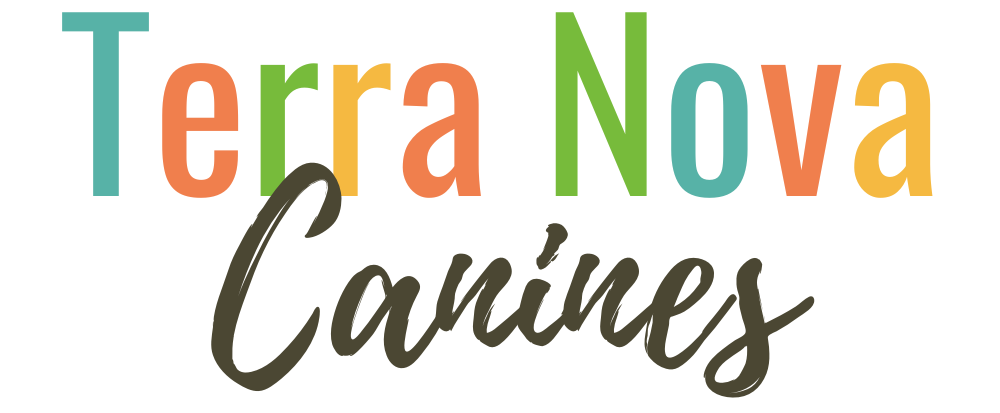Leash Walking
Step 1: Start with your pup on leash, by your side. Place their leash in your hand that is opposite the side they are on. This will allow you to treat them more easily.
Step 2: Walk a step forward and when they follow, 'mark' and treat. Do this a few times. It may seem silly but we are setting up your dog for success.
Step 3: Increase the number of steps forward gradually. If you find your dog getting too far ahead, or pulling, go back to a lower number of steps before 'marking' and treating.
Step 4: Begin adding your verbal cue, 'with me'. Add this right before you start walking.
Step 5: Continue to increase the number of steps forward, and instead of stopping after each set, practice 'marking' and treating while still moving forward.
TIP: Treat your dog at the seam of your pants or at your leg, this way they will associate being at your still with their reward!
Fun & Games
Loose Leash Walking: Stop & Go
The following contract with your dog says that you will be consistent and kind while training them to walk with a loose leash.
Rule 1: If your leash is attached to your dog’s collar, pulling will never work.
Rule 2: If you don’t have the time or patience to train, put a harness on your dog so you don’t break Rule 1.
Harnesses with a front attachment ring are a good place to start to manage a dog who pulls. They reduce pulling while your dog can get a bit of exercise. Keep in mind, however, this does not replace training but can assist with teaching leash skills.
Training loose leash walking: always be sure to connect with your dog. You can’t train your dog while you’re talking on your cell phone or listening to music. You have to achieve a real connection with your dog – this is not just about treats. Therefore, you should begin training this skill in a calm environment without competing distractions that may impede your dog’s ability to pay attention. If necessary, begin training in your home or yard.
Stand next to your dog. Then take one step forward.
If your dog moves with you, mark, smile and give him a treat. You can vary how frequently you give treats.
As long as your dog stays at your side, give him constant feedback. Mark and treat near your hip, knee or ankle, depending on the size of your dog. For a miniature dog or a puppy, you can use a kitchen spatula with cheese or baby food on it for them to lick off so you don’t have to constantly bend over. If your dog pulls, stop moving. Wait until your dog reconnects with you, when he does – maybe just a small sign like an ear slightly tipped back in your direction, turning his head, or ideally making eye contact, thank him and give several treats (between 5 and 10) one after another. Your dog should move toward you to be rewarded if he is in front of you. Don’t move toward your dog to give treats!
Next, you can decide if you will continue in the same direction, to one side or to the other, or back the way you came – you aren’t trying to go very far this first training session. You are trying to create the habit of saying to your dog: “we aren’t going anywhere if you are pulling on the leash.”
Stop & Go: It takes two to have a tight leash. If your dog pulls on the leash, remain still (stop). Don’t pull back, yank, jerk or tug on the leash. Your job is to keep your dog safe and guide him, don’t be the other end in a game of tug of war. It is your dog’s job to keep a loose leash. You will pay him with treats and permission to walk, sniff and explore (go) – always with a relaxed leash. You might discover that a good portion of the pulling comes from your end of the leash.
At first, practice this in a low-distraction environment. Increase the level of distractions gradually, praise and treat your dog generously when he performs well in difficult situations. Also, your dog has likely already learned to sit, this is a useful skill to practice with loose leash walking because it will give both you and your dog a break.
Find It
On the surface this couldn’t be simpler: Toss a handful of tiny treats on the ground and encourage the puppy to ‘find’ the treats.
The key to this is to share in the excitement of finding those treats!
“Oh my gosh!” “Here’s one!” “Oh, look!” You should be interested in what your puppy is doing.
The look on your puppy’s face will tell you all you need to know – you get it!
This works wonderfully with full-grown dogs, too, and has served to enhance many relationships between dog and owner.
This can also be used when you're in a situation where you need to distract your puppy. If they are focused on something and you need them to disengage, toss some treats on the ground to 'Go Find!'!
With contributions from IAABC

